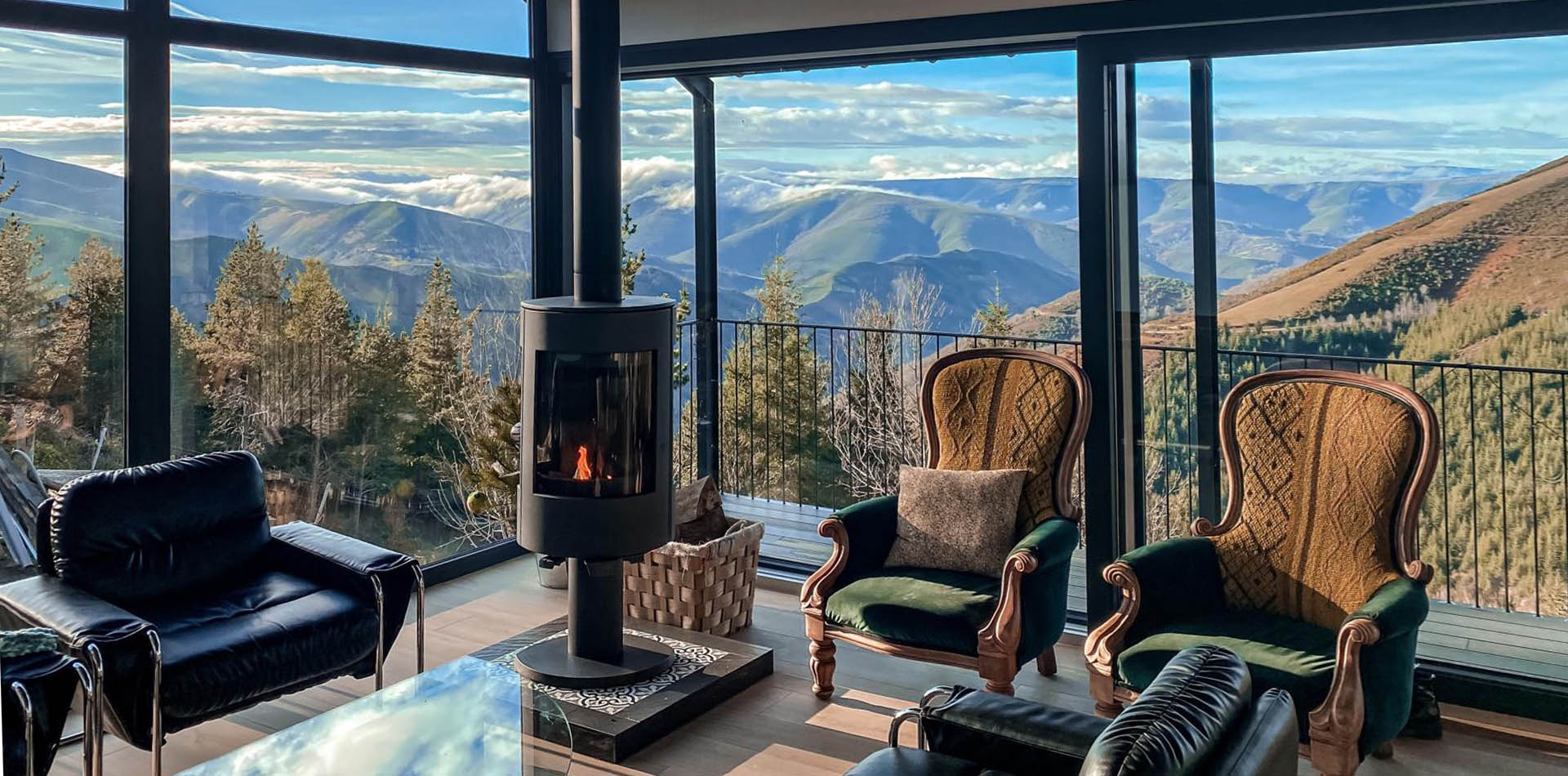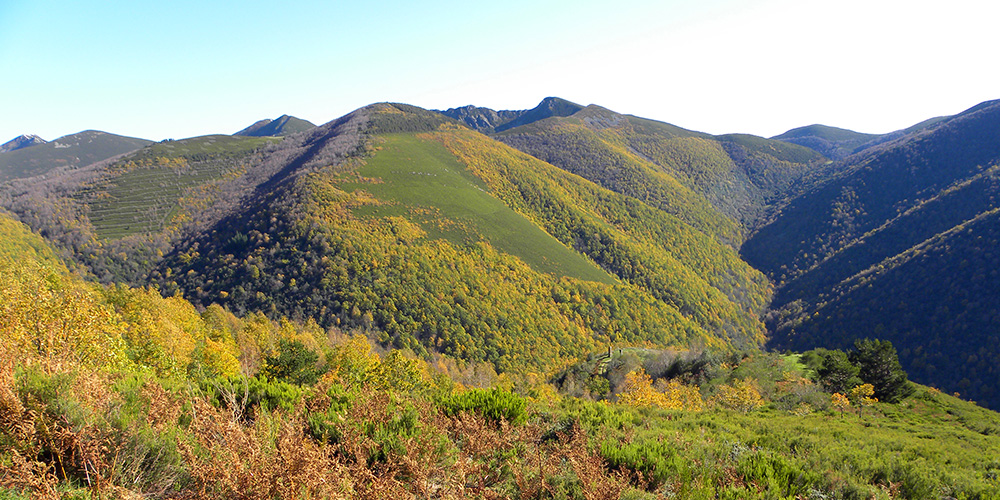Beluga Whales in Valencia
Friday, June 27, 2025
 Within the spectacular complex of the Ciudad de las Artes y las Ciencias (City of Arts and Sciences), the Oceanogràfic de Valencia aquarium is home to some of those treasures that nature usually reserves for those who are able to go and seek them. Within the spectacular complex of the Ciudad de las Artes y las Ciencias (City of Arts and Sciences), the Oceanogràfic de Valencia aquarium is home to some of those treasures that nature usually reserves for those who are able to go and seek them.
When it is a matter of penetrating the Arctic waters of Canada, which is not exactly an easy feat, it is undeniable that being able to view the smiling beluga whales that live at the Oceanogràfic becomes altogether a privilege. In fact, they are the only examples of this species living in captivity in the whole of Europe. These beautiful animals with off-white skin, almost closer to dolphins than to whales, receive visitors from their aquatic tank with a joviality that never fails to surprise.
They are also known as sea canaries, on account of how vocal they are and the huge range of trills, laughs, whistles and squeaks that they use without inhibition of any kind. Viewing them in surroundings that replicate their natural habitat as well as those at the Oceanogràfic is a real pleasure and altogether an experience for anyone, whatever their age. And, to the side, in the same enclosure, the somewhat more scandalous and sullen walruses complete our tour of the Canadian Arctic.
https://www.oceanografic.org/en/especie/beluga-whales/
 1
Like
Published at 9:57 PM Comments (1)
1
Like
Published at 9:57 PM Comments (1)
Underwater Encounters
Friday, June 20, 2025
Spain, with its stunning coastlines bordering the Mediterranean Sea and the Atlantic Ocean, is a magnet for swimmers, snorkelers, and divers. The crystal-clear waters teem with life, offering incredible opportunities for exploration. However, beneath the surface, a few creatures possess defence mechanisms that, if encountered unwarily, can deliver a painful, though rarely life-threatening, experience. Understanding these potential dangers is key to a safe and enjoyable time in Spain's aquatic playgrounds.
It's crucial to emphasize that serious incidents with marine life in Spain are extremely rare. Most creatures prefer to avoid human interaction, and defensive actions usually only occur when they feel threatened or are accidentally stepped on.
Here's a look at the marine life you should be aware of:
Weever Fish (Pez Araña)
Among the most common culprits for painful encounters are weever fish (pez araña). These small, sandy-colored fish are masters of camouflage, burying themselves in the shallow seafloor, particularly in sandy areas close to shore. They possess venomous spines on their dorsal fin and gill covers.

The Danger: Stepping on a weever fish is agonizing. The venom causes intense, immediate pain, swelling, and can lead to numbness, tingling, and even nausea.
What to do:
- Immediate action: Submerge the affected area in very hot water (as hot as tolerable) for 30-90 minutes. This helps denature the venom.
- Medical attention: Seek medical advice, especially if symptoms persist or are severe.
- Prevention: Wear water shoes, especially when wading in sandy, shallow areas. Shuffle your feet as you walk to disturb any buried fish.
Jellyfish (Medusas)
Jellyfish are a common sight in Spanish waters, particularly during warmer months. While most are harmless, several species can deliver a sting ranging from mildly irritating to quite painful. The most commonly encountered include various types of pelagia, rhizostoma, and occasionally the more potent Portuguese man o' war (though less common directly on Spanish beaches, currents can bring them).

The Danger: Jellyfish stings cause immediate burning pain, redness, itching, and welts. The severity depends on the species and the individual's reaction
What to do:
- Rinse, don't rub: Rinse the affected area with seawater (not fresh water, which can cause more nematocysts to fire).
- Remove tentacles: Carefully remove any visible tentacles using tweezers or a gloved hand.
- Hot water or vinegar: Some suggest applying vinegar, but hot water (similar to weever fish stings) can also help alleviate pain for certain species.
- Medical attention: Seek medical advice if symptoms are severe, widespread, or if you experience difficulty breathing.
- Prevention: Pay attention to beach warning flags and local reports of jellyfish presence. Consider wearing a rash guard or wetsuit if swimming in areas known for jellyfish.
Sea Urchins (Erizos de Mar)

Sea urchins are ubiquitous in rocky areas and tidal pools along the Spanish coast. Their long, brittle spines, while not venomous in the same way as weever fish, can easily penetrate skin and break off, causing discomfort and potential infection.
The Danger: Stepping on or touching a sea urchin can result in painful, embedded spines, redness, and swelling. If not removed, the spines can cause prolonged irritation and localised infections.
What to do:
- Remove spines: Carefully try to remove visible spines with tweezers. For deeply embedded spines, medical attention may be required.
- Soak: Soaking the area in hot water can help soften the skin and make spine removal easier.
- Medical attention: Consult a doctor if spines are deeply embedded, cause significant pain, or show signs of infection.
- Prevention: Wear water shoes, especially when exploring rocky areas or tide pools.
Less Common, But Worth Knowing:
- Stingrays (Rayas): While generally docile and preferring to avoid humans, stingrays can deliver a painful sting from their barbed tails if accidentally stepped on. They are typically found buried in sandy bottoms. Shuffle your feet to alert them to your presence.
- Moray Eels (Morenas): These fascinating creatures inhabit rocky crevices and wrecks. While not aggressive, they can deliver a nasty bite if provoked or if a hand is mistakenly placed near their lair. Admire them from a distance.
- Barracudas (Barracudas): Though they have a formidable appearance and sharp teeth, barracudas are generally not a threat to swimmers and are more curious than aggressive. Attacks on humans are exceedingly rare and usually involve mistaken identity in murky water or during spearfishing.
General Advice for a Safe Underwater Experience:
- Be aware of your surroundings: Always pay attention to where you're stepping and reaching, especially in murky or sandy areas.
- Never touch marine life: Observe marine creatures from a distance. Do not attempt to touch, feed, or harass any animal.
- Wear appropriate footwear: Water shoes are highly recommended for protection against weever fish and sea urchins.
- Heed local warnings: Pay attention to beach flags, lifeguard advice, and local news regarding marine life presence.
- Swim with a buddy: It's always safer to swim or dive with someone else.
- Educate yourself: Learn about the common marine life in the area you are visiting.
Spain's underwater world offers breathtaking beauty and incredible experiences. By being mindful of these easily avoidable encounters and respecting the natural inhabitants of the sea, you can ensure your aquatic adventures are memorable for all the right reasons.
 0
Like
Published at 11:04 PM Comments (1)
0
Like
Published at 11:04 PM Comments (1)
The History of Sangría
Saturday, June 14, 2025
If you thought that sangría was a Spanish invention, then think again. The “refreshing drink which combines wine and water with sugar and lemon and other complements”, as it is defined in the official Spanish dictionary(RAE), is British. Well, the name is... Yes, I was just as surprised when I found out!
The British sangría has been known about since 1987 when the philologist Francisco Marcos Álvarez, divulged to the Spanish Language History Congress (Cáceres) that the word sangría comes from 'sangaree', a drink enjoyed by the British residents of the British West Indies and some other North American colonies back in the seventeenth century. When British ex-pats are demanding sangría on the terrace of a local bar they are unwittingly using an Anglicism.
Sangaree, back in 1694 on the island of Martinique, was made with “Madeira wine mixed in a jug with sugar, the juice from a lemon, a little cinnamon and powdered clove, plenty of nutmeg and a crust of toast”. This drink was described by the Frenchman Jean-Baptiste Labat in his book 'Nouveau voyage aux isles de l'Amérique' (1722), who tasted the concoction on his trip to the British Antilles and declared that once strained and chilled, it was delicious and refreshing.
This 'sangaree', made with wine from Madeira, Porto or the Canary Islands (sometimes also with rum), was a very popular drink in the colonies of Barbados, Bahamas and Virginia throughout the seventeenth and eighteenth centuries. From the English 'sangaree', Labat understood 'sang-gris', a term that passed via Chinese whispers to Spanish as 'grey blood' thanks to Esteban Terreros and his 'Diccionario Castellano con las voces de ciencias y artes' (1788). He defined it as “a beverage that the English invented and is often drunk in the English and French colonies of America: the English say that it refreshes because it contains some lemon juice or citron [...] but that it goes quickly to the head proves that this drink contains a lot of spirit and a lot of fire”.
In 1803, the RAE would veto 'grey blood' and would choose to include a new meaning for the word sangría: “a drink that is composed of water, lemon and red wine”. This meaning stood for decades in Mexico and other Spanish-American countries, probably due to the Caribbean influence, but strangely in Spain, there is no previous mention to 1800, except for “sangrías de vino tinto” served at the Cadiz Carnival in 1770.
Is it that wine and lemon maybe didn't appeal to Spaniards? Of course it did, but until the beginning of the 19th century, that mixture was known here as lemonade. A descendant of the medicinal and spicy wines of the Middle Ages, wine lemonade was one of the most popular drinks of the Golden Age.
Whether served as a soft drink or as a medicine, it was used to treat fever, vomiting and as an anticoagulant measure before bloodletting. However, by the mid-nineteenth century, Spain fervently adopted the term 'sangría' and the old 'lemonade' was abandoned.
In Menorca, the sengri menorquin, without a doubt comes from the English 'sangaree'. The British occupation of the island during the seventeenth century left, among other things, this hot drink made from red wine, sugar, orange, cinnamon, anise, nutmeg and bread, extraordinarily similar to that concoction that over 300 years ago Labat tried in sunny Martinique.
With the passing of time Sangria developed into what we would now consider the 'traditional' recipe. Traditional homemade sangria is typically made with good young red wine and seasonal fruits, both in the form of juice (oranges, lemons) and in pieces to add flavour (peaches and apples). If you fancy making it here are the steps to follow:

Ingredients to prepare homemade sangria (1.5 litres):
1 bottle of good red wine (750 ml) - 'Tinto Joven'
2 peaches
1 apple
2 oranges (variety for juice)
1 lemon for juice
1/2 cinnamon stick.
1 can (330 ml) soda (optional)
2 tablespoons of sugar.
2 tablespoons of water.
- Squeeze the oranges and the lemon, strain their juice and put it in the jug or container where you are going to serve the sangria. Also, add the red wine.
- Peel the apple, core it, cut it into small squares and add them to the jar.
- Do the same with the peaches: peel them, remove the pit, cut them into squares and put them in the jar as well and add the cinnamon stick.
- Now you will need to prepare a small syrup. It is simply a matter of diluting the sugar so that when it is added to the jar it dissolves perfectly and does not remain at the bottom. To do this, put the sugar and water in a saucepan over medium heat for a few minutes until the sugar dissolves. Add it to the jar and stir well.
- Now let it rest at room temperature for a couple of hours, so that the flavours merge and the wine absorbs all the flavour of the fruit. If you are going to drink it more than two hours after preparing it, then you should put it in the refrigerator until it is time to serve it.
- Just before serving, you can add the soda, if you want - it is optional. It is best to put ice in the glasses and not in the jug to avoid diluting it too much.
 2
Like
Published at 12:23 AM Comments (2)
2
Like
Published at 12:23 AM Comments (2)
Los Ancares: Spain for the Adventurous Souls
Wednesday, June 4, 2025
Tired of the well-trodden paths of Spain? Yearning for a truly authentic experience that blends breathtaking nature with a deep dive into ancient culture? Then set your sights on Los Ancares, a magnificent mountain range nestled between Galicia, Castile and León, and Asturias. This UNESCO Biosphere Reserve is a hidden gem, offering a remarkable escape for tourists and expats eager to discover Spain's wilder side.

Los Ancares is a land of dramatic contrasts. Deep valleys carved by ancient glaciers give way to towering peaks reaching over 2,000 metres, like Cuiña and Mustallar. Here, you'll find a landscape remarkably preserved, thanks to its historical isolation. Dense oak, chestnut, and beech forests cloak the slopes, while higher altitudes reveal heathlands and juniper bushes. It's a paradise for biodiversity, home to an incredible array of plant species, some unique to the Iberian Peninsula, and a haven for wildlife, including elusive brown bears, wolves, deer, and diverse birdlife like eagles and vultures. Keep your eyes peeled – you might even spot the rare broom hare!

One of the most captivating aspects of Los Ancares is its unique ethnographic heritage. For centuries, life here revolved around the pallozas, circular or oval-shaped stone huts with distinctive thatched roofs. These ancient dwellings, some dating back to Celtic times, housed both people and their livestock, a testament to a self-sufficient way of life. Today, a visit to a palloza is an absolute must. Many have been lovingly preserved, with some even transformed into fascinating ethnographic museums, like the Palloza Museo Casa do Sesto in Piornedo, offering a glimpse into the region's rich past. You'll find clusters of these charming structures in villages like Piornedo, O Cebreiro, and Campo del Agua.

Los Ancares is an outdoor enthusiast's dream. The unspoiled landscape offers endless opportunities for hiking, from gentle strolls through ancient woodlands to challenging ascents of its majestic peaks. Popular routes include the ascent to Pico dos Tres Bispos and various trails around the Ancares Leoneses Biosphere Reserve. "La Mirada Circular" is another recommended hiking trail.
- Medieval Castles: Explore the remnants of the past with visits to castles like Doiras and Frades, offering picturesque views and tales of old.
- Prehistoric Sites: The region boasts archaeological treasures, including tumuli (burial mounds) and megalithic chambers, known locally as mámoas or medorras, showcasing human presence since the Neolithic era.
- The Camino de Santiago: Los Ancares lies on the historic Camino de Santiago, adding a spiritual dimension to your journey. O Cebreiro, a significant stop on the French Way, is a captivating village with its own collection of pallozas and a beautiful sanctuary.

No trip to Spain is complete without indulging in local cuisine, and Los Ancares won't disappoint. The region is known for its hearty, traditional dishes, reflecting its agricultural heritage. Look out for local specialities like:
Botillo: A cured, seasoned pork product, typical of El Bierzo region, which borders Los Ancares.

Reineta Apples: A distinct variety of apple, renowned for its flavour.
Cured Beef and Pears: Local produce that speaks to the region's fresh, natural bounty.
Hearty stews and game dishes, often featuring local ingredients, are also staples.
Los Ancares offers a range of rural accommodations, from cosy guesthouses to charming rural hotels, allowing you to immerse yourself fully in the tranquil atmosphere. While the area has historically been isolated, rural tourism is growing, providing more options for visitors seeking an authentic experience.
Getting around Los Ancares often requires a car to fully explore its dispersed villages and natural wonders. However, the journey itself, winding through the pristine landscapes, is part of the adventure.
If you're seeking a Spanish adventure that takes you off the beaten track, where nature reigns supreme and ancient traditions live on, Los Ancares awaits. It's a place where the air is cleaner, the views are grander, and the sense of discovery is truly profound. Come and uncover the untamed heart of Spain!
Accommodation in Los Ancares:
https://www.cabanasancares.com/
 0
Like
Published at 7:59 PM Comments (1)
0
Like
Published at 7:59 PM Comments (1)
Spam post or Abuse? Please let us know
|
|